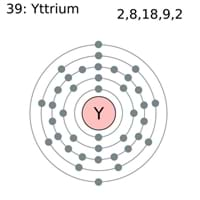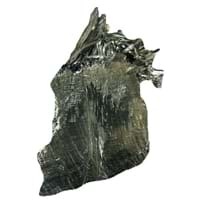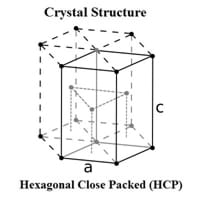Y Element
Periodic Table
0
Symbol
Y 0
Group Number
3 15
Period Number
5 3
Block
d block 0
Element Family
Transition Metal 0
CAS Number
7440655 25
Space Group Name
P63/mmc 0
Space Group Number
194.00 5
Facts
0
Interesting Facts
- Yttrium Metal is highly toxic.
- Yttrium Metal is highly reactive in nature hence not found free in nature.
Sources
Found in Minerals, Mining, Ores of Minerals 0
History
0
Who Discovered
Johan Gadolin 0
Discovery
In 1794 0
Abundance
0
Abundance In Universe
7 * 10-7 % 17
Abundance In Sun
~0.0000001 % 26
Abundance In Meteorites
0.00 % 21
Abundance In Earth's Crust
0.00 % 22
Abundance In Oceans
0.00 % 25
Abundance In Humans
Not Available 0
Uses
0
Uses & Benefits
- Yttrium metal is used in different alloys, as it increases the strength of aluminum Magnesium alloy. It is used for radar microwave filter.
- It is also used as a catalyst in ethene polymerisation.
Industrial Uses
Electrical Industry, Electronic Industry 0
Medical Uses
NA 0
Other Uses
Alloys 0
Biological Properties
0
Toxicity
Highly Toxic 0
Present in Human Body
Yes 0
In Blood
0.00 Blood/mg dm-3 26
In Bone
0.07 p.p.m. 25
Physical
0
Melting Point
1,523.00 °C 27
Boiling Point
3,337.00 °C 21
Appearance
0
Physical State
Solid 0
Color
Silvery White 0
Luster
NA 0
Hardness
0
Mohs Hardness
Not Available 0
Brinell Hardness
589.00 MPa 22
Vickers Hardness
Not Available 0
Speed of Sound
3,300.00 m/s 23
Optical Properties
0
Refractive Index
Not Available 0
Reflectivity
Not Available 0
Allotropes
No 0
α Allotropes
Not Available 0
β Allotropes
Not Available 0
γ Allotropes
Not Available 0
Chemical
0
Chemical Formula
Y 0
Isotopes
0
Known Isotopes
19 20
Electronegativity
0
Pauling Electronegativity
1.22 38
Sanderson Electronegativity
0.65 29
Allred Rochow Electronegativity
1.11 29
Mulliken-Jaffe Electronegativity
Not Available 0
Allen Electronegativity
1.12 38
Electropositivity
0
Pauling Electropositivity
2.78 16
Ionization Energies
0
1st Energy Level
600.00 kJ/mol 53
2nd Energy Level
1,180.00 kJ/mol 63
3rd Energy Level
1,980.00 kJ/mol 76
4th Energy Level
5,847.00 kJ/mol 10
5th Energy Level
7,430.00 kJ/mol 14
6th Energy Level
8,970.00 kJ/mol 17
7th Energy level
11,190.00 kJ/mol 18
8th Energy Level
12,450.00 kJ/mol 18
9th Energy Level
14,110.00 kJ/mol 19
10th Energy Level
18,400.00 kJ/mol 17
11th Energy Level
19,900.00 kJ/mol 18
12th Energy Level
36,090.00 kJ/mol 5
13th Energy Level
Not Available 0
14th Energy Level
Not Available 0
15th Energy Level
Not Available 0
16th Energy Level
Not Available 0
17th Energy Level
Not Available 0
18th Energy Level
Not Available 0
19th Energy Level
Not Available 0
20th Energy Level
Not Available 0
21st Energy Level
Not Available 0
22nd Energy Level
Not Available 0
23rd Energy Level
Not Available 0
24th Energy Level
Not Available 0
25th Energy Level
Not Available 0
26th Energy Level
Not Available 0
27th Energy Level
Not Available 0
28th Energy Level
Not Available 0
29th Energy Level
Not Available 0
30th Energy Level
Not Available 0
Electrochemical Equivalent
1.11 g/amp-hr 56
Electron Work Function
3.10 eV 35
Other Chemical Properties
Chemical Stability, Flammable, Ionization, Radioactive Isotopes, Solubility 0
Atomic
0
Atomic Number
39 73
Electron Configuration
[Kr] 4d1 5s2 0
Crystal Structure
Hexagonal Close Packed (HCP) 0
Crystal Lattice
HCP-Crystal-Structure-of-Yttrium.jpg#100 0
Atom
0
Number of Protons
39 72
Number of Neutrons
50 55
Number of Electrons
39 72
Radius of an Atom
0
Atomic Radius
180.00 pm 14
Covalent Radius
190.00 pm 18
Van der Waals Radius
200.00 pm 28
Atomic Weight
88.91 amu 67
Atomic Volume
19.80 cm3/mol 21
Adjacent Atomic Numbers
0
Previous Element
37 0
Next Element
56 0
Valence Electron Potential
48.00 (-eV) 30
Lattice Constant
364.74 pm 31
Lattice Angles
π/2, π/2, 2 π/3 0
Lattice C/A Ratio
1.57 16
Mechanical
0
Density
0
Density At Room Temperature
4.47 g/cm3 71
Density When Liquid (at m.p.)
4.24 g/cm3 48
Tensile Strength
Not Available 0
Viscosity
Not Available 0
Vapor Pressure
0
Vapor Pressure at 1000 K
0.00 (Pa) 32
Vapor Pressure at 2000 K
4.27 (Pa) 10
Elasticity properties
0
Shear Modulus
25.60 GPa 30
Bulk Modulus
41.20 GPa 30
Young's Modulus
63.50 GPa 32
Poisson Ratio
0.24 26
Other Mechanical Properties
Ductile 0
Magnetic
0
Magnetic Characteristics
0
Specific Gravity
4.47 59
Magnetic Ordering
Paramagnetic 0
Permeability
Not Available 0
Susceptibility
Not Available 0
Electrical Properties
0
Electrical Property
Conductor 0
Resistivity
596.00 nΩ·m 8
Electrical Conductivity
0.02 106/cm Ω 47
Electron Affinity
29.60 kJ/mol 30
Thermal
0
Specific Heat
0.30 J/(kg K) 18
Molar Heat Capacity
26.53 J/mol·K 27
Thermal Conductivity
17.20 W/m·K 48
Critical Temperature
Not Available 0
Thermal Expansion
10.60 µm/(m·K) 37
Enthalpy
0
Enthalpy of Vaporization
393.00 kJ/mol 18
Enthalpy of Fusion
17.15 kJ/mol 16
Enthalpy of Atomization
418.00 kJ/mol 18
Standard Molar Entropy
44.40 J/mol.K 33
|
||
|
||
|









